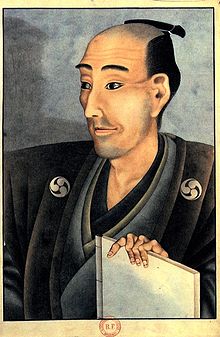- Chonmage
-
The chonmage (丁髷, ちょんまげ) is a form of Japanese traditional haircut worn by men. It is most commonly associated with the Edo Period and samurai, and in recent times with sumo wrestlers. It was originally a method of using hair to hold a samurai helmet steady atop the head in battle, and became a status symbol among Japanese society.
A traditional Edo-era chonmage featured a shaved pate. The remaining hair, which was long, was oiled and tied into a small ponytail which was folded onto the top of the head in the characteristic topknot.
In modern times, the only remaining wearers of the chonmage are sumo wrestlers. This style of chonmage is slightly different, in that the pate is no longer shaved, although the hair may be thinned in this region to allow the topknot to sit more neatly.
Sumo wrestlers with sekitori status are allowed, on certain occasions, to wear their hair in a more elaborate form of topknot called an oicho or ginkgo leaf style, where the ends of the topknot are splayed out to form a semicircle. Given the uniqueness of the style in modern Japan, the Sumo Association employs specialist hairdressers called tokoyama to cut and prepare sumo wrestlers' hair.
The chonmage is of such symbolic importance in sumo that snipping it off is the centerpiece of a wrestler's retirement ceremony. Dignitaries and other important people in a wrestler's life are invited to take one snip, with the final one taken by his trainer.
See also
Categories:- Japan stubs
- Sumo wrestling
- Hairstyles
Wikimedia Foundation. 2010.


